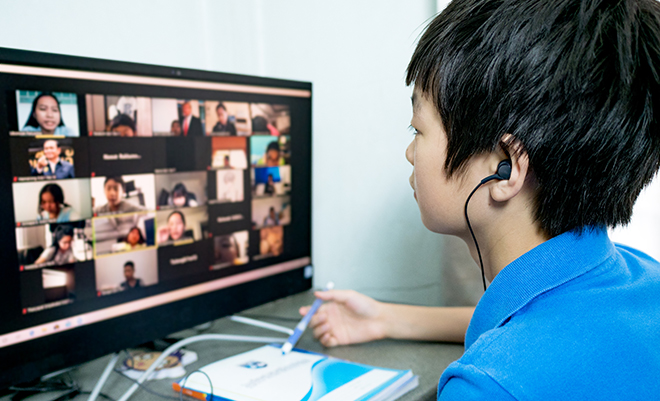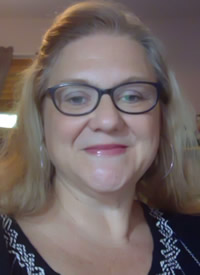Next Gen Navigator
Distance Science Learning
Posted on 2020-07-30
Disclaimer: The views expressed in this blog post are those of the author(s) and do not necessarily reflect the official position of the National Science Teaching Association (NSTA).

Sensemaking in the Science Classroom: No Matter Where It Might Be
What will science classrooms look like in the fall? This question now looms over every educator. One thing is certain: School will start, and educators must plan, but plan for what? Despite all the uncertainty, it will be vital for science educators to focus on giving students opportunities for sensemaking no matter what education looks like in the fall. In science, student sensemaking is a must.
Engaging students in making sense of phenomena and solving problems is a keystone of three-dimensional teaching and learning. Having students’ questions about phenomena drive the learning requires careful planning and facilitation. Three-dimensional classrooms are active and filled with discussion, as academic discourse through small- and whole-group discussions are a necessary and important part of figuring out important science ideas. The big question now is this: How do we create a three-dimensional classroom in a virtual space?
Teachers began to face that dilemma last spring. Across the country, students’ homes were transformed into classrooms, and literally overnight, teachers were asked to drastically change the way they teach. Now with fall reopening plans continually changing, it remains unclear what classrooms will look like. Moving forward, it will be valuable to reflect on what we’ve learned from last spring’s distance learning.
Science teachers are still on their own learning journeys in implementing the instructional shifts needed for three-dimensional teaching and learning. Many have shifted their classrooms to rigorous learning environments where students collaborate to make sense of science ideas by engaging in the science and engineering practices and using the crosscutting concepts to explain how or why phenomena occur. However, engaging in science as a scientist (or in engineering as an engineer) is easier said than done in a remote learning environment.
Although it would have been easy to revert to science teaching practices of the past, many science teachers worked diligently to sustain student engagement in sensemaking through virtual platforms. As teachers continue to grapple with the uncertainty of what school will be like in the future, preparing for what science education will look like varies widely from school to school.
In this month’s Navigator, three teachers will share their stories of successes and struggles as they guided student sensemaking using new platforms and applications, all while navigating various school guidelines and state mandates.

Kristin Rademaker
Next Gen Navigator Guest Editor
Kristin Rademaker has been involved in education for more than 20 years, spending 18 years teaching science in both general and special education settings. She has worked with the Next Generation Science Standards (NGSS) since their adoption in 2014 and has worked both locally and nationally to help districts implement their new state standards. Rademaker serves as a professional development facilitator and instructional coach for the National Science Teaching Association (NSTA) and reviewed NGSS-aligned curriculum for Achieve’s Science Peer Review Panel.
Rademaker is a contributing author for the materials found on the Next Generation Science Storylines and inquiryHub websites and frequently speaks at local, state, and national conferences on instructional shifts toward three-dimensional teaching and learning. She currently serves as president-elect of the Illinois Science Teaching Association. In 2017, she received the Robert E. Yager Excellence in Teaching Award and was named the Yager Scholar for that award year. In 2018, Rademaker received the NSTA Distinguished Teaching Award for her contributions to science education.
Sensemaking Resources for This Year’s Challenges
Marcy Buchanan, Inquiry Learning and Curriculum Area Specialist for Science at Woodstock Community School District 200 in Woodstock, Illinois, shares how empowering students with independent sensemaking strategies is crucial for meeting this year’s challenges. Read more.
Remote Learning: What I Thought I Knew, and What I Learned
Illinois science teacher Randie Johnson discusses what she has learned about remote learning and what she will be focusing on when the new school year begins. “While remote learning was challenging,” Johnson writes, “it created an opportunity to view [my] classroom through a new lens and truly understand what needed to be fixed or incorporated to create an environment where all students can be successful.” Read more.
Helping Students Make Sense in Remote Learning
Veteran science educator Rachel Patton shares various online tools and resources that can help teachers prepare for the different forms school may take this fall. Further, these resources “enable teachers to not only talk to students, but also to listen, and they will likely be necessary tools in building and maintaining relationships with a whole new group of students,” writes Patton. Read more.
Note: The Next Gen Navigator is a monthly e-newsletter from NSTA delivering information, insights, resources, and professional learning opportunities for science educators by science educators on the Next Generation Science Standards and three-dimensional instruction. Click here to sign up to receive the Navigator every month.
The mission of NSTA is to promote excellence and innovation in science teaching and learning for all.
NGSS Professional Learning old Teaching Strategies Three-Dimensional Learning


